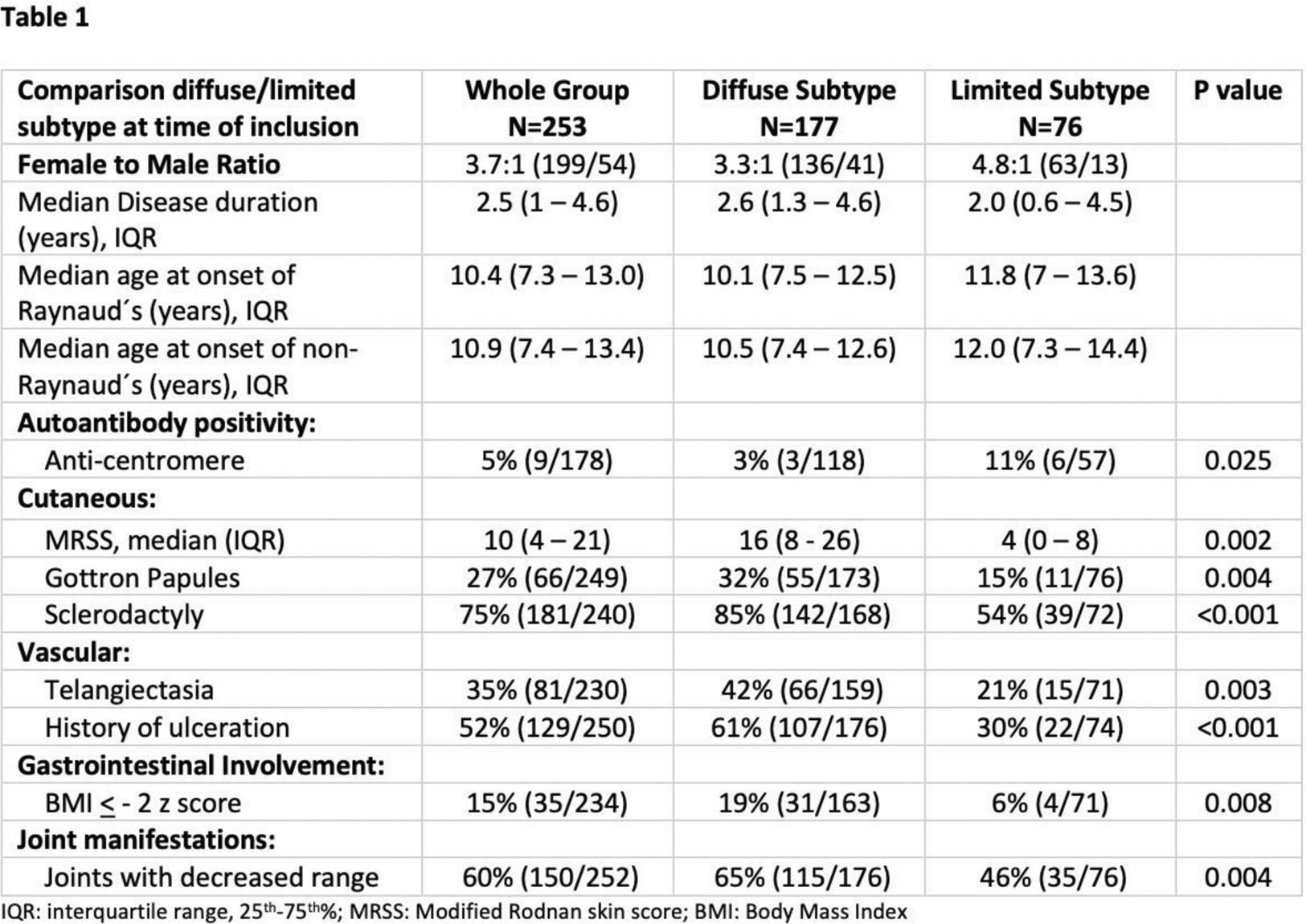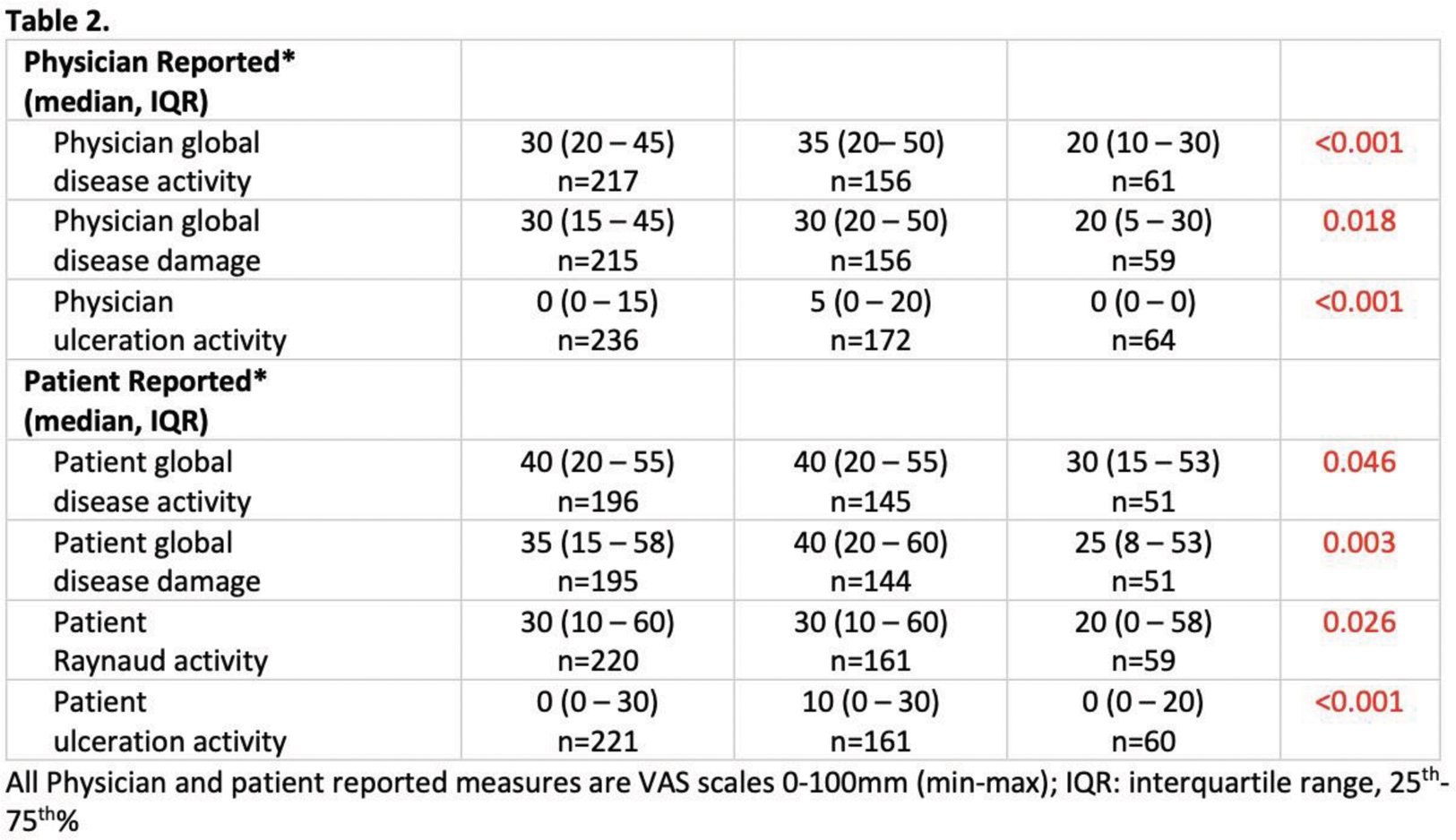

Background: In adult systemic sclerosis they are significant differences in clinical presentation of diffuse and limited subtype. In juvenile systemic sclerosis (jSSc) are the differences less prominent as we reviewed last time in a publication for the first 150 patients [1] of the juvenile scleroderma inception cohort (jSScC). The differences can change as the included number of patients is growing in the cohort.
Objectives: To review the differences of clinical characteristics of patients and patient (PRO) and physician (PhRO) reported outcomes with limited jSSc (ljSSc) and diffuse (djSSc) subtype in the jSScC.
Methods: We extracted date from the jSScC including patients who were enrolled till 1 st f December 2023 into the cohort [1]. We compared the clinical characteristics, PRO and PhRO of the two subtypes and calculated statistical significance using chi-square test.
Results: 253 patients were included in the study. 70% (n=177) of the patients had diffuse subtype. Around 70% of the patients were Caucasian in both groups. The median age of onset of Raynaud’s were 10.1 in the djSSc and 11.8 years in the ljSSc. The median age at the time of the first non-Raynaud was 10.5 years in the djSSc and 12.0 years in the ljSSc. Looking at antibody profile the anti-centromere antibodies were significantly more frequent in ljSSc (11% versus 3%, p=0.025). djSSc patients had significantly higher (Table 1). Modified Rodnan skin score (16 versus 4, p=0.002), more frequently Gottron papules (32% versus 15%, p=0.004), with sclerodactyly (85% versus 54%, p <0.001), with telangiectasia (42% versus 21%, p=0.003), with history of ulceration (61% versus 30%, p<0.001)), with decreased Body mass Index < 2 standard deviation(19% versus 6%, p=0.008), and presence of joints with decreased range of motion (65% versus 46%, p=0.004). None of the patients had renal crisis. There was no significant difference in cardiopulmonary and gastrointestinal involvement. Looking at PRO and PhRO in all categories djSSc patients had significantly more severe disease (Table 2).


Conclusion: This results present a different organ involvement pattern form adults. Despite more severe disease according to patient and physician reported outcomes, we found no significant differences in the cardiopulmonary and gastrointestinal involvement between the subtypes. The antibody profile anti-Scl70 and anti-PMscl was not different between subtypes either.
This project was supported by an unrestricted grant from „Joachim Herz Stiftung“
REFERENCES: [1] Foeldvari I, Klotsche J, Kasapcopur O, et al. Differences Sustained Between Diffuse and Limited Forms of Juvenile Systemic Sclerosis in an Expanded International Cohort. Arthritis Care Res (Hoboken). 2022 Oct;74(10):1575-1584.
Acknowledgements: NIL.
Disclosure of Interests: None declared.